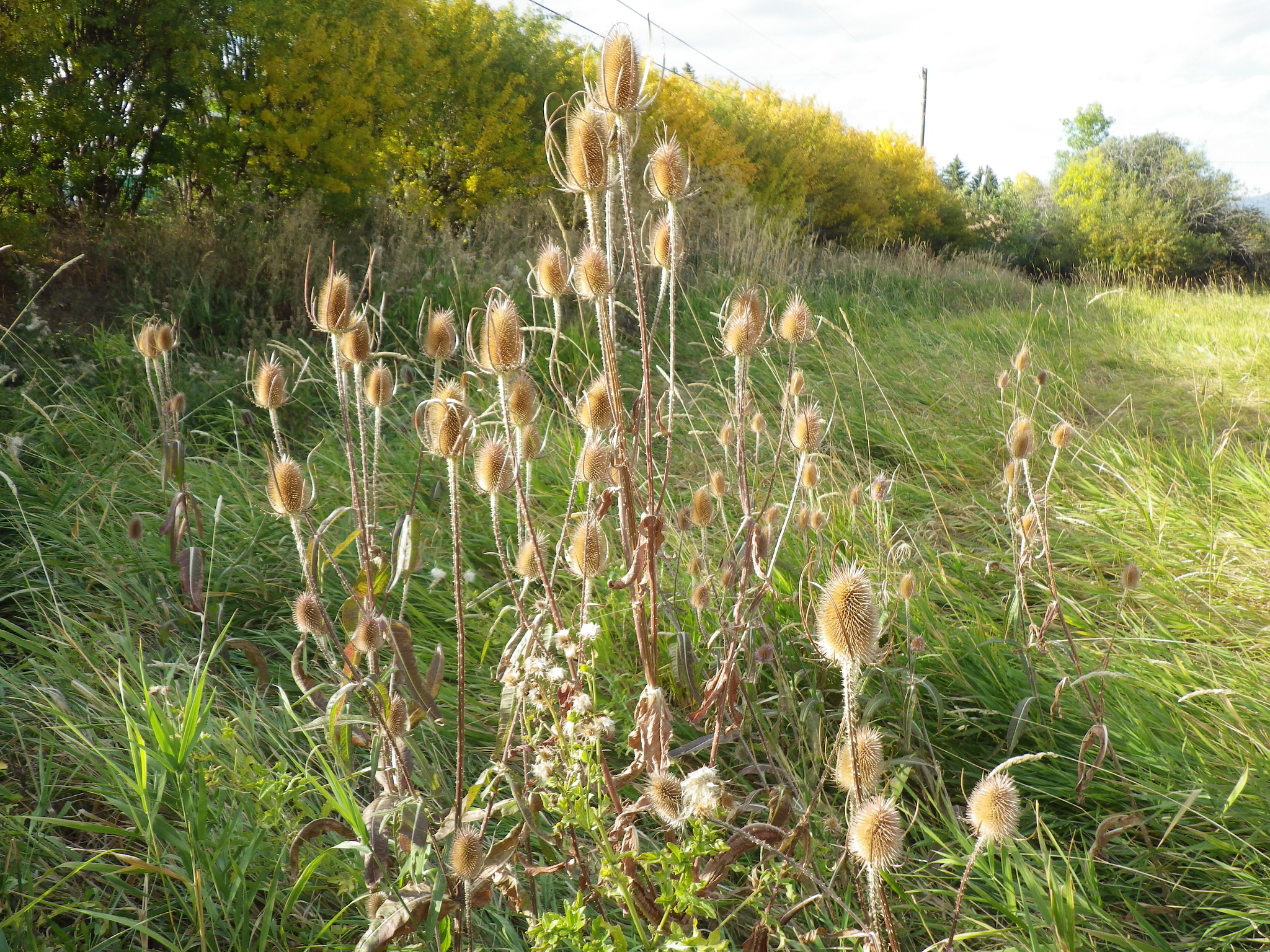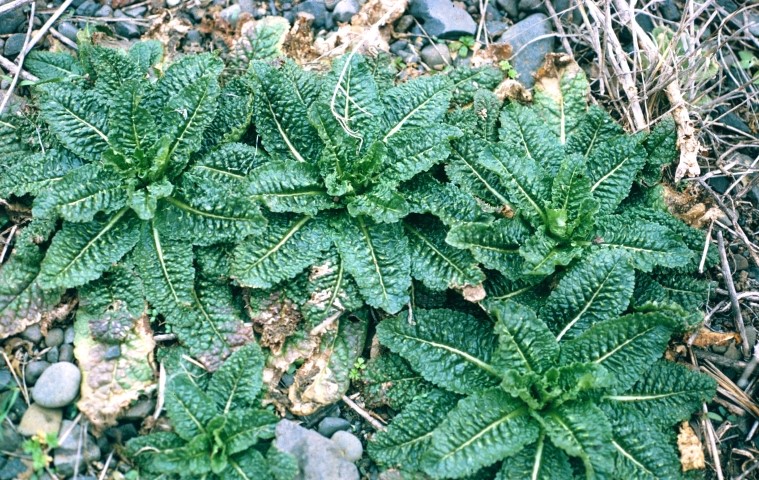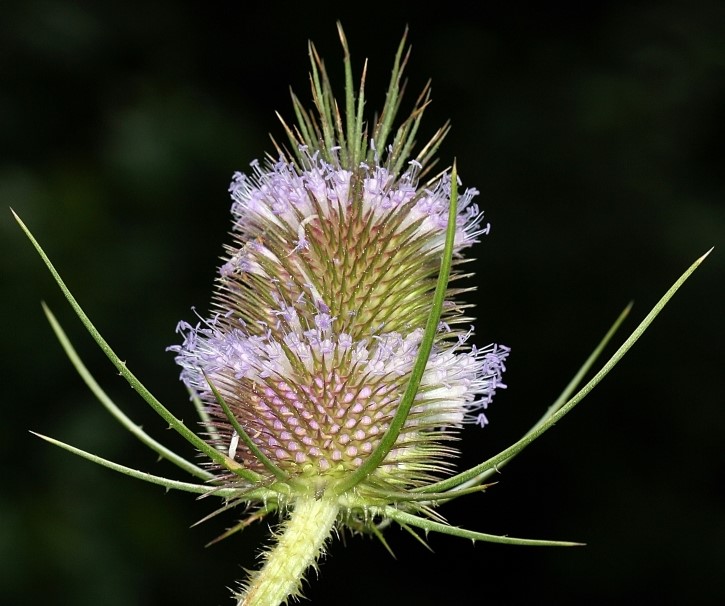Common Teasel (Dipsacus fullonum)
Introduction

Photo: Matt Lavin, Montana State University, Flickr.
Common teasel is a biennial to short-lived perennial in the Dipsacaceae family and native to Europe, western Asia, and northern Africa. Heads of teasel species were historically used in the textile industry to raise the nap on woolen cloth and as a hairbrush. Perhaps more familiar is the use of common teasel in dried flower arrangements and other crafts (for fun, browse your favorite search engine for “teasel crafts”). Common teasel was likely brought to North America both intentionally for uses like those described above and unintentionally as a seed contaminant. At least 13 states include common teasel on their invasive species list; however, it is not on the Montana state noxious weed list but is on the Beaverhead, Ravalli, and Yellowstone County lists.
Identification

Photo: Steve Dewey, Utah State University, Bugwood.org.
Common teasel first forms basal rosettes with wavy-edged, oblong leaves, along with a fleshy taproot sometimes 2 feet deep. When common teasel bolts, it has striped, angled stems that are increasingly prickly moving upward along the stem. Stems, which can be 2 to 6 feet tall, are pithy and hollow. Leaves along the stem are opposite, lanceolate, and 2 to 12 inches long. These leaves are fused around the stem at the base. Both basal and stem leaves have prickles, especially on the backside of the midrib. Common teasel is most easily identified by its unique flower heads and bracts. Large (1 to 4 inches long), egg-shaped flower heads are enfolded by spiny bracts that curve upward and are unequal in length. Small, lavender to white flowers typically occur in two rings around the flower head. Seeds are 4-angled, cylindrical achenes.

Photo: David Cappaert, Bugwood.org.
Biology and Ecology
Common teasel reproduces only by seed. Reports of seed production range from 850 to 34,000 seeds per plant. Most seeds fall close to the parent plant, but seeds can be spread via water and roadways. Dead plants persist through winter and retain seeds in the flower heads. Common teasel thrives in open, sunny environments and can be weedy along roadsides and ditches and in moist meadows, wetland margins, rangelands, pastures, and disturbed areas.
Management
Mechanical control including hand-pulling/digging and mowing can be effective on common teasel. If mowing is used, plants should be mowed as close to the ground as possible once flowers start to appear. Mowing may need to be repeated within a growing season if plants resprout from the ground, and over time to wear out the seed bank. Because dead flower heads retain seeds, be careful not to spread seeds through mowing. A variety of herbicidal active ingredients have activity on common teasel including 2,4-D, aminocyclopyrachlor (e.g., Method), chlorsulfuron (e.g., Telar), metsulfuron (e.g., Escort), imazapic (e.g., Plateau), and aminopyralid (e.g., Milestone). Applying at the rosette stage typically results in the best control. Always read and follow directions on the herbicide label. Fire is not an effective control technique by itself but can be used to remove old stems and improve herbicide application to rosettes. Livestock may graze rosettes, but teasel has low palatability. No biological control agents are currently available.
Further Information
For more information about this month's weed post, contact Extension Invasive Plant Specialist Jane Mangold. Past posts are available in the Monthly Weed Post Directory.
This weed post is also available as a printable PDF (370 KB).
